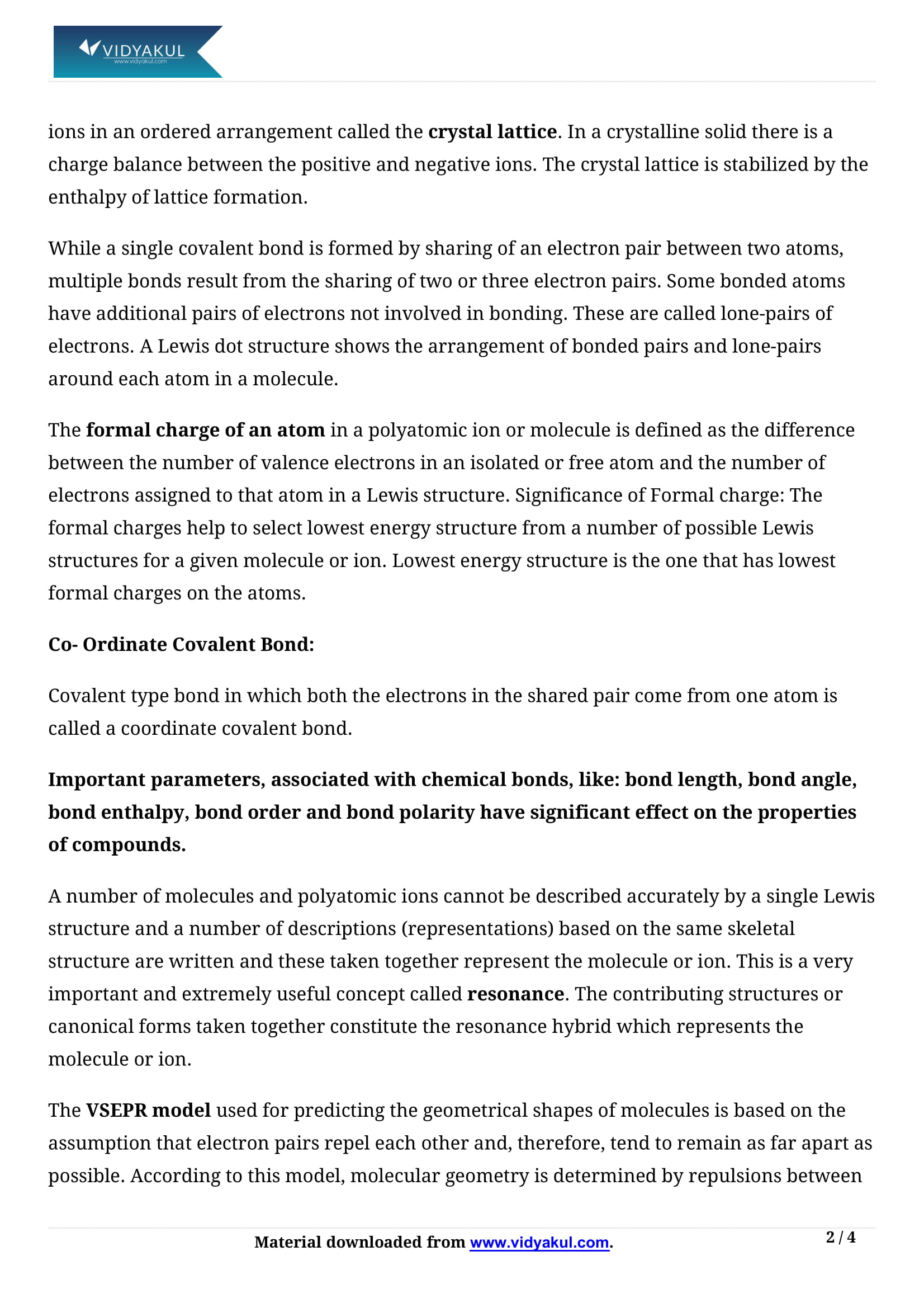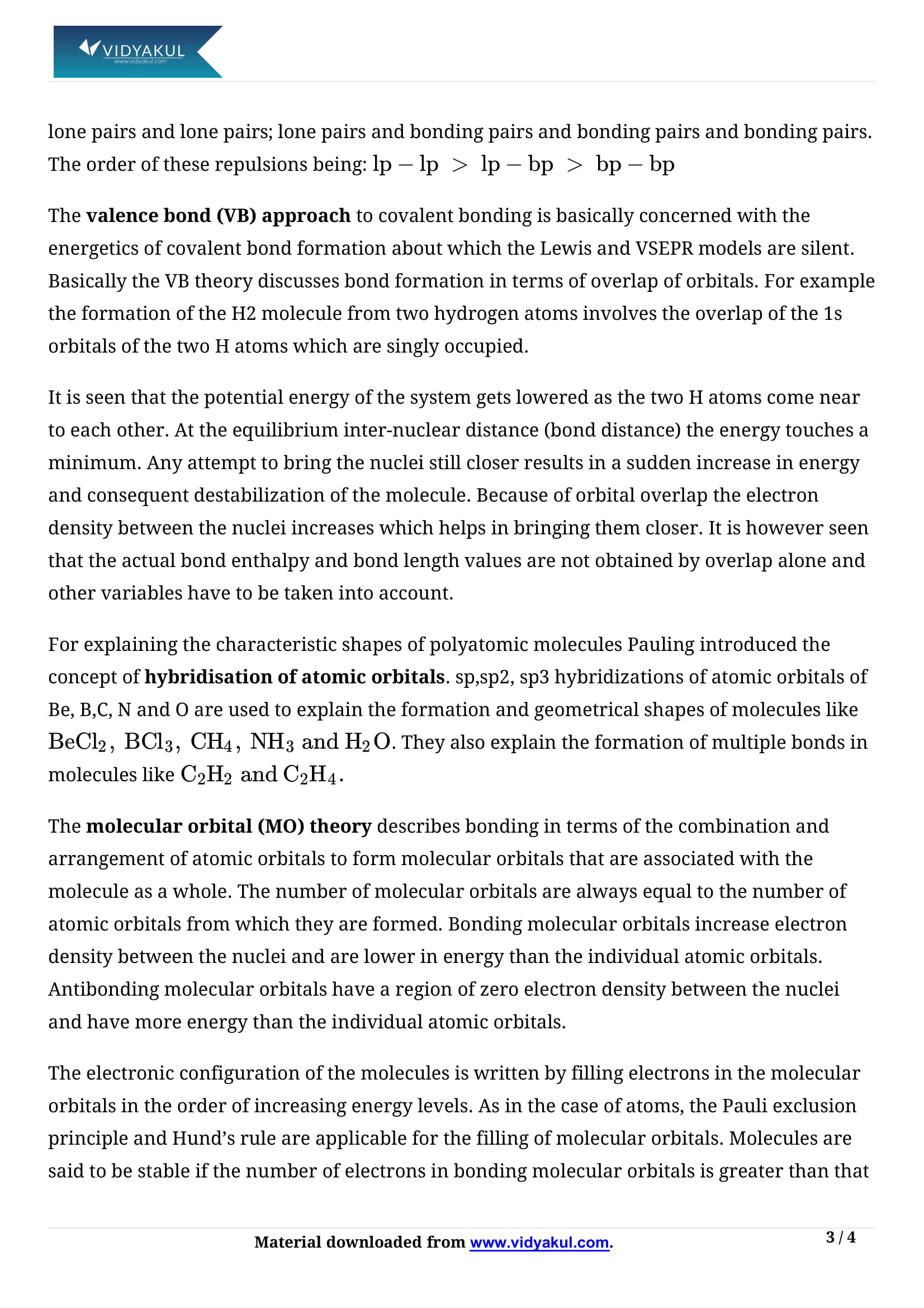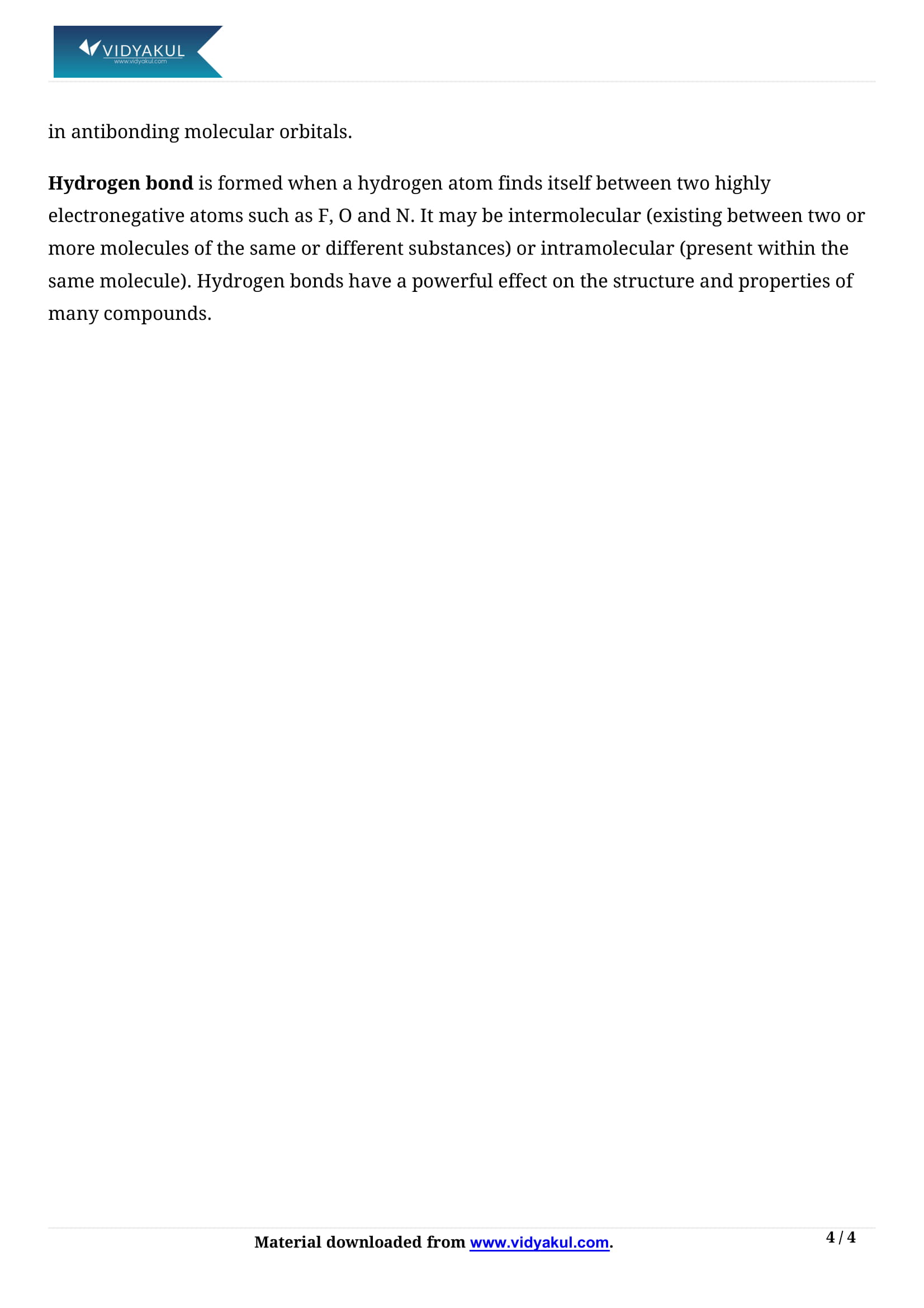Chemical Bonding and Molecular Structure Class 11 Notes

Chapter 4 Chemical Bonding and Molecular Structure
In the Chemical Bonds and Molecular Structures module, students learn about electrical valence and the definition of covalent. Students learn what resonance is, the VSEPR model, and the concept of valence bonding. NCERT notes, thus provide a deep understanding of these topics.
CBSE Class 11 Chemistry Chapter 4 notes from Vidyakul are provided by subject matter experts. These notes are accurate and help students dispel their doubts. In addition to the NCERT notes, Vidyakul provides over 400 exercises covering concepts in 121 chapters. These practice questions and practice exams are provided free of charge to students.
CBSE 11th CHEMISTRY CH-4
Points to Remember
Some of the important points from Class 11 Chemistry Chapter 4 are as follows:
A chemical bond is the force that holds the atoms in a molecule together.
The Lewis symbol represents valence electrons as dots surrounding the element symbol.
Formal charge on an atom in a molecule/ion = Total no. of valence electrons in free atom − Total no. of electrons of lone pairs −12 (Total no. of shared electrons).
Magnitude of repulsions: Lone-Pair-Lone Pair > Lone Pair-Bond Pair > Bond Pair-Bond Pair.
Dipole moment: μ=q × d
Sigma and pi bonds: It can be s–s, s–p or p–p
Calculation of total number of bond pairs (B): L=T–B.
If A represents central atom, B bond pair and L lone pair, we have AB2 (linear).
Topics and Sub-Topics
This chapter provides a brief introduction to some basic concepts related to chemistry. Students learn about chemical formulas, properties, and various chemical bond theories. Vidyakul covers the important concepts and topics of Chapter 4 Chemistry for Year 11. This subject scored the highest on the exam. Therefore, students need to prepare properly in order to successfully pass the exam. Now let's look at the important topics of this chapter.
Frequently Asked Questions
What does the Valence bond theory state?
In valence bond theory, the atomic orbitals of individual atoms are combined to form chemical bonds.
What is the meaning of lone pair of electrons?
In chemistry, a lone pair refers to a pair of valence electrons that are not shared with another atom in a covalent bond and is sometimes called an unshared pair or non-bonding pair.
What is a hydrogen bond?
In hydrogen bonding, interaction involving a hydrogen atom located between a pair of other atoms having a high affinity for electrons.
Practice Questions
How is a chemical bond formed? Explain in detail.
What is Octet rule? Write its limitations and importance.
Write the difference between a pi bond and a sigma bond.
Explain polar covalent bond with an example.
A chemical bond is the force that holds the atoms in a molecule together.
The Lewis symbol represents valence electrons as dots surrounding the element symbol.
Formal charge on an atom in a molecule/ion = Total no. of valence electrons in free atom − Total no. of electrons of lone pairs −12 (Total no. of shared electrons).
Magnitude of repulsions: Lone-Pair-Lone Pair > Lone Pair-Bond Pair > Bond Pair-Bond Pair.
Dipole moment: μ=q × d
Sigma and pi bonds: It can be s–s, s–p or p–p
Calculation of total number of bond pairs (B): L=T–B.
If A represents central atom, B bond pair and L lone pair, we have AB2 (linear).
What does the Valence bond theory state?
What is the meaning of lone pair of electrons?
What is a hydrogen bond?
How is a chemical bond formed? Explain in detail.
What is Octet rule? Write its limitations and importance.
Write the difference between a pi bond and a sigma bond.
Explain polar covalent bond with an example.
Learn more about it in Chemical Bonding and Molecular Structure Class 11 Notes pdf.
Download this solution for FREE Download this PDF







